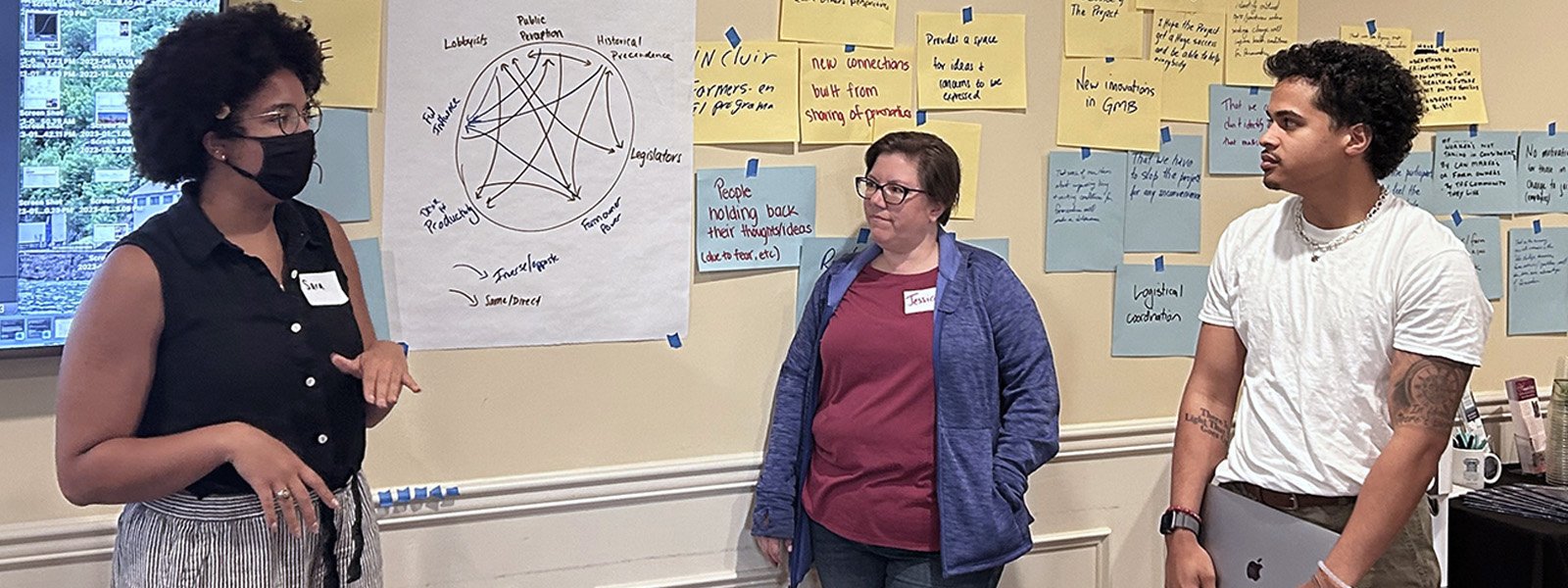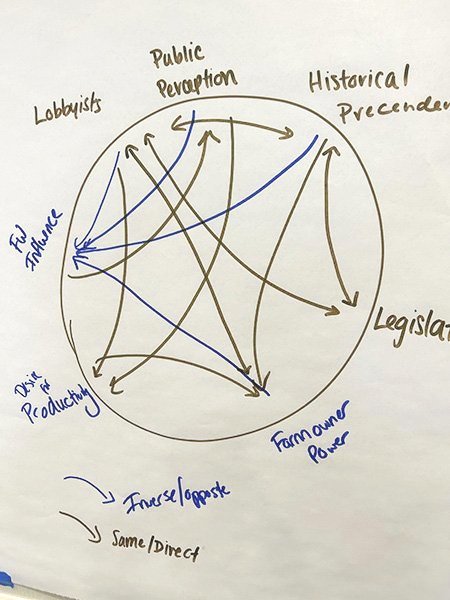SYSTEM DYNAMICS
Unpacking the status quo: stakeholders come together to imagine new possibilities
We are collaborating with communities that live and work throughout Maryland’s Eastern Shore to explore the systems and processes affecting the health of farmworkers.
Lessons learned from this study will provide the foundation for future pandemic responses.
What is System Dynamics?
System dynamics is an approach used for studying and modeling the ways that complex social systems create unintended and sometimes unexpected behavior over time.
In this approach, we look at the feedback loops, accumulations, and time delays in system structures to disentangle why systems behave the way they do. This allows us to explore the interdependencies and interactions within and between different systems – such as economic, environmental, healthcare, or education systems – offering insights crucial for addressing multifaceted challenges. Examples of systems that can be studied include economic, environmental, healthcare, and education systems.
Community-based system dynamics is an approach that uses system dynamics as a tool for community understanding, planning, and mobilization. It centers on the perspectives and experiences of those most connected to that community. This process involves engaging community members, stakeholders, and experts to understand and address complex issues through collaborative mapping, modeling, and dialogue. The approach aims to empower communities to actively participate in problem-solving, decision-making, and long-term planning processes.
Understanding the WHY and HOW behind our findings.
How do different sectors of the agriculture community perceive and experience the systems influencing the day-to-day lives of migrant and seasonal farmworkers?
Employing Community-Based System Dynamics to Understand Health Outcomes for Farmworkers
Our team is designing and conducting participatory group model building workshops with stakeholder groups, including farmworkers, growers and employers, farmworker advocates, and government decision-makers representing select Mid-Atlantic states.
These workshops aim to illuminate how state regulations and health protection strategies may operate in reality.
For example, how do policy decisions, adherence to public health guidance, and regulation enforcement (or lack thereof) influence the health outcomes of migrant and seasonal farmworkers?

COMMUNITY-BASED SYSTEM DYNAMICS IN ACTION
Define a Complex Problem
How do migrant and seasonal farmworkers disproportionately experience poor health outcomes? How has that changed over time?
Engage Community Stakeholders
We are collaborating with farmworkers, growers, employers, farmworker advocates, and government decision-makers representing Maryland’s Eastern Shore region throughout the process.
Develop a Causal Map
Causal mapping allows stakeholders to develop a visual theory of the complex relationships between different factors causing the defined problem.
Analyze Findings
Analyzing similarities and differences in the causal maps and synthesizing findings to develop new structural insights and questions. This analysis helps to unveil new strategies or perspectives to solve the problem.
Invest in Communities
This process develops capabilities within communities and organizations to understand the outcomes, the use of the models, and their limitations. This approach is an investment in long-term capabilities persisting after the project is done.
“Our perspectives and past experiences constrain our understanding. The challenge is to weave together various narratives and perspectives to uncover a deeper understanding of the world we live in.”
The Social System Design Lab at Washington University
The Social System Design Lab at Washington University in St. Louis supports this project. Their team has applied system dynamics modeling to study a variety of public health issues, including cumulative environmental risks, healthcare delivery, childhood nutrition, and urban health.




